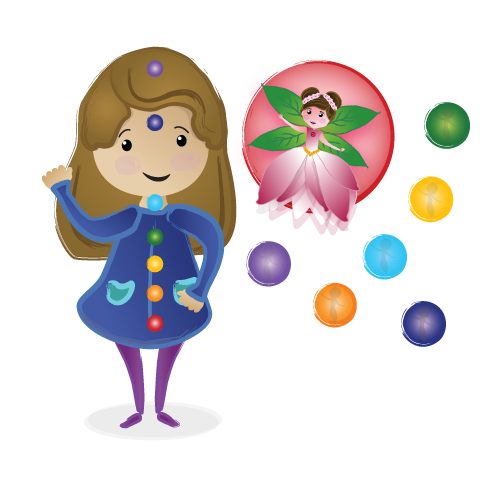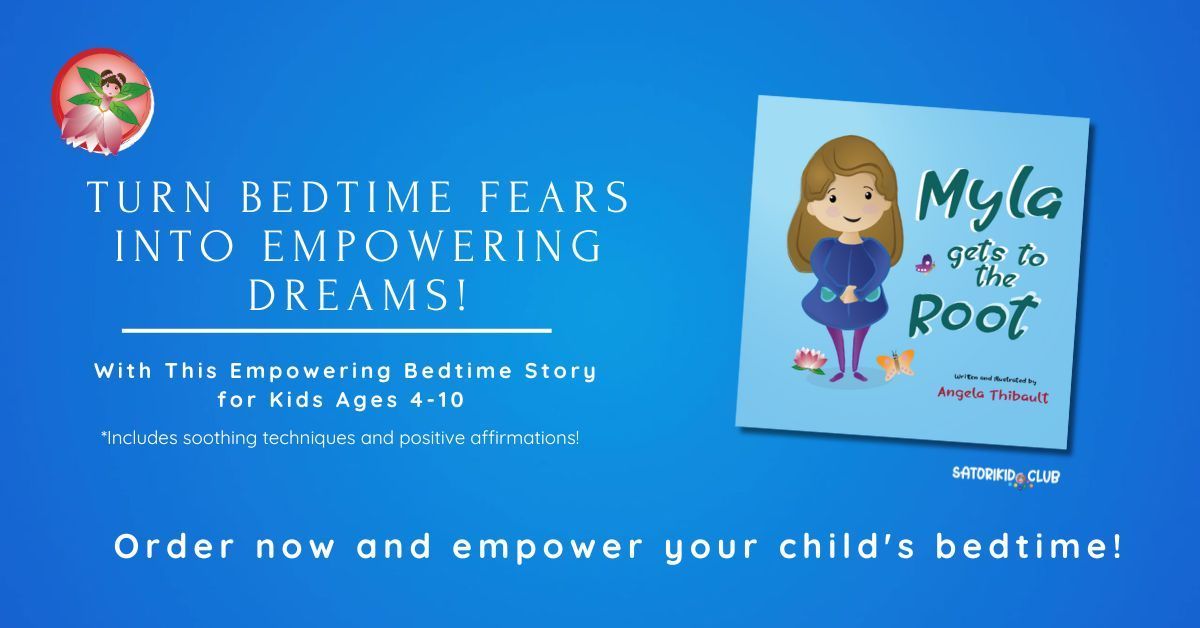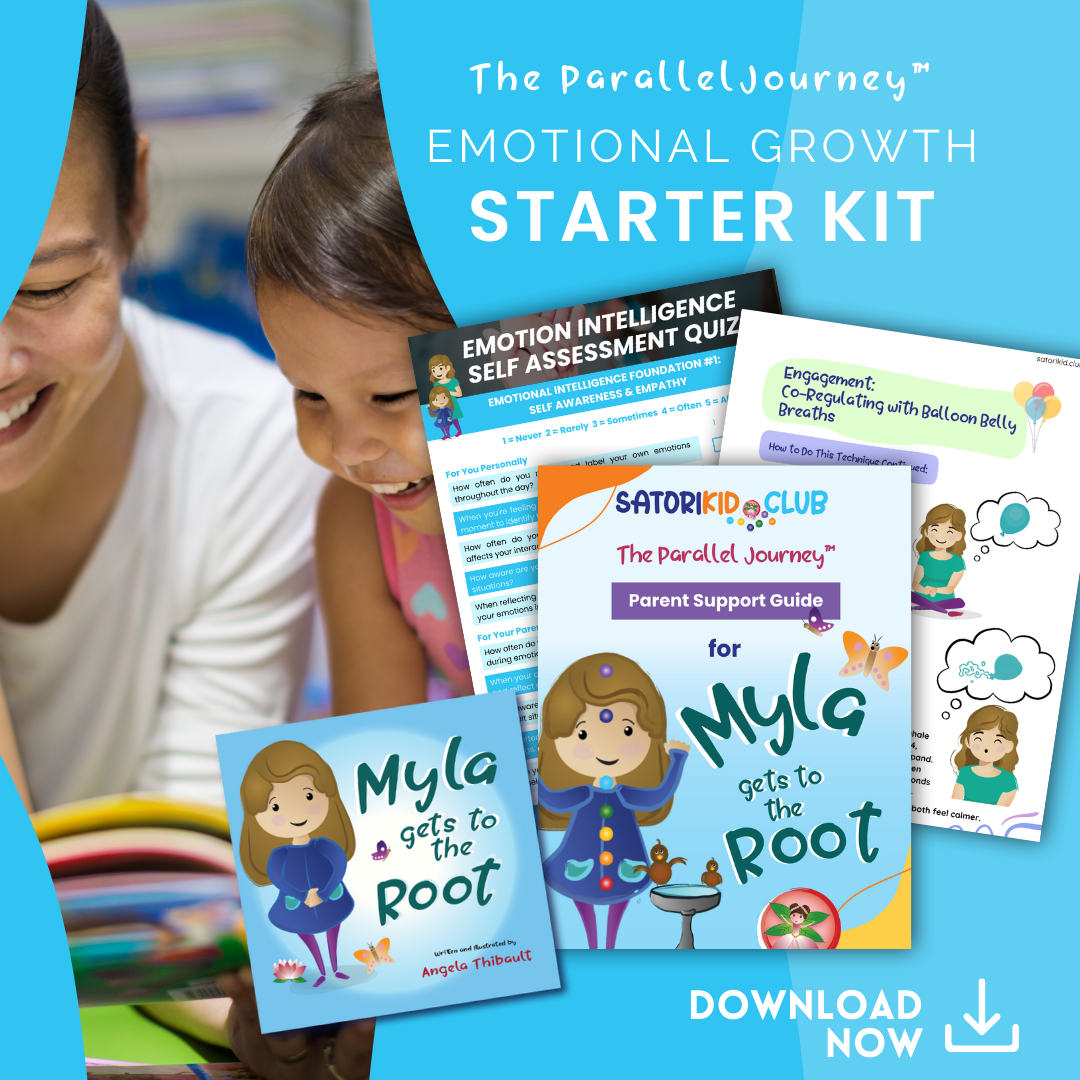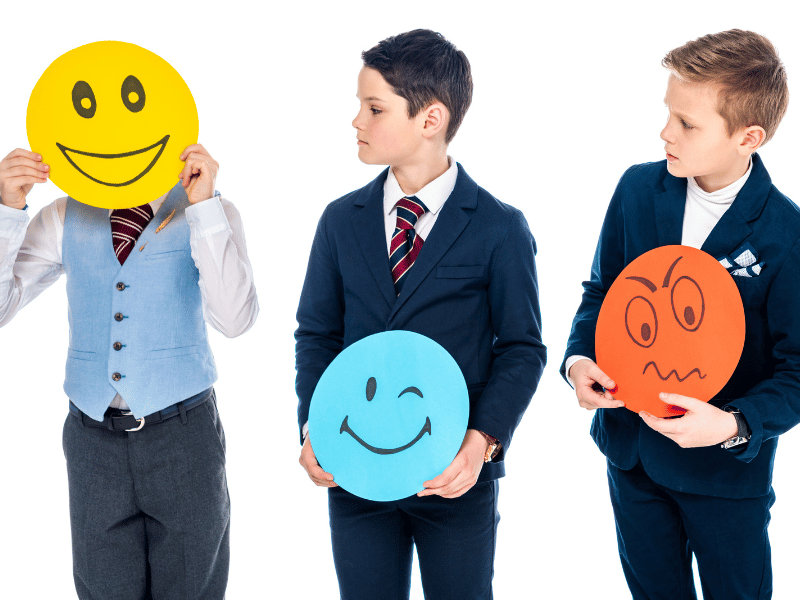Start your journey here
4 Effortless Meditation Techniques for Kids Ages 4-10 to try this week.
All activities should be supervised by an adult.
Share

Learning Four Effortless Meditation Techniques is a Fantastic Tool for Both You and Your Children to Learn to Regulate and be More Present.

When I came across the idea of meditation, I was initially searching for ways to manage my own emotions and reduce stress because of my Ulcerative Colitis flares. I had heard meditation could help with stress relief and reducing stress was initially one of the best ways I kept symptoms under control. I was desperate to try anything that promised stress relief, so I signed up for a few traditional meditation classes—but they didn't work for me. I myself could not sit still for too long without getting fidgety, and staring at a candle for endless amounts of time left me feeling more irritated than relaxed.
That's when I started looking for alternatives and discovered a world of meditation practices I hadn't considered before. Needless to say, I was pretty grateful the day I found Walking Labyrinth Meditation. This quickly became one of my favourites. The movement gave me something to focus on, and it felt more natural and calming than trying to sit still. So I began practicing these types of techniques, adding them to my main routine, trying regularly, just hoping to heal. Really, at that point, my focus was solely on me and my healing, but something unexpected happened as I learned and practiced these techniques daily—my kids got curious. I am not sure why this surprised me; I mean, what mother hasn't tried to do something solely for themselves only to have their child suddenly become highly interested in that activity, too?
They'd see me trying these new activities like walking around my space, listening to soft music, or trying yoga in the living room and ask, "What are you doing, Momma?" I found that insisting they leave me to myself to get some "peaceful time" only caused more stress. Kind of the opposite of the entire activity. So one day, after being too tired to distract them while I got "Me Time," I included them. It turned into a shared experience, and I quickly realized that the meditations I preferred—like walking or using visualizations (imagination) —were also more conducive to younger children.
What I love about meditation is how naturally it teaches kids the building blocks of emotional intelligence. By practicing simple techniques like mindful breathing or guided visualization, we as a family started to slow down, which helped us all to recognize and name our emotions. Whether we are feeling frustrated, excited, or sad, we have learned to identify those feelings instead of being overwhelmed by our feelings. For my family, this was a massive shift. Once they could name their emotions, addressing them became much easier to do.
Beyond awareness, meditation also gave us the tools to calm ourselves when emotions feel too big. For us, practices like the "Balloon Belly Breaths," where we imagine our tummy is a balloon we fill with air with each breath, became favourites. This practice opened the door to learning co-regulation skills that taught emotional regulation in a way that was simple and accessible, even for younger kids.
Regularly meditating also fostered empathy, a vital part of emotional intelligence. My daughter loved relaxing nighttime meditations, where we would listen to calming music and list all the good things that happened in our day and all the good thoughts that will happen tomorrow. As an adult of 22, she still uses the method of playing serene, calming music to center herself for a deep, restful sleep.
So, if you've ever thought meditation might not work for your family, I encourage you to give it a try. I had put together four of my family's favorite go-to meditations, which we did when my children were young.
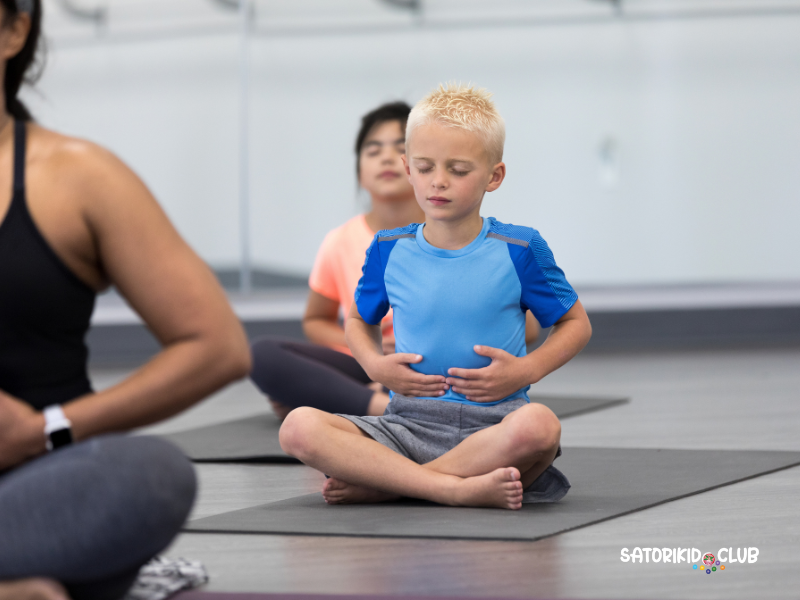
1. Use "Balloon Belly Breathes " meditation to help both you and your child feel calmer sooner.
Benefits:
Balloon Belly Breathing is a powerful yet simple tool to help kids calm down during moments of emotional overwhelm. This technique not only teaches deep breathing but also provides sensory feedback through tactile engagement. It is a co-regulation opportunity where parents and children can calm down together, building emotional safety and trust.
How to Do It:
- Sit comfortably or lie down in a cozy spot.
- Place your hands on your belly and close your eyes.
- Imagine your belly as a balloon.
- Inhale deeply through your nose, filling the "balloon" as it expands.
- Hold your breath briefly, then exhale slowly through your mouth, deflating the balloon.
- Repeat for 3–5 cycles or until you and your child feel calmer.
Why It Works:
Teaches Emotional Regulation:
Balloon Belly Breathing introduces children to the concept of deep, diaphragmatic breathing in a playful way. By engaging their imagination and focusing on their breath, kids learn how to regulate their emotions during moments of stress or overwhelm. This practice helps shift their nervous system from a reactive state to a calm, centered one.
Provides Sensory Feedback:
The tactile sensation of placing their hands on their belly, combined with the visualization of a balloon inflating and deflating, creates a multisensory experience. This feedback reinforces the connection between their body and emotions, making the technique more effective and memorable.
Encourages Co-Regulation:
When parents join in, Balloon Belly Breathing becomes a co-regulation activity. Children feel emotionally safe when they see their parents modelling calmness and self-regulation, strengthening their bond and trust.
Easy to Learn, Anytime, Anywhere:
This technique is simple enough to use in a variety of settings—whether before bed, after a tantrum, or during a busy day. Its adaptability makes it a versatile tool for calming and centering kids.
Fosters Imagination and Fun:
The use of an imaginary balloon turns the breathing exercise into a game, engaging children’s creativity and making mindfulness enjoyable rather than a chore. Letting them choose the balloon’s color or size adds a personal touch, encouraging their participation and enthusiasm.
Pro Tip: Personalize the experience by letting your child choose the colour or size of their imaginary balloon.

2. Try the "Nature Noticing Walk Meditation" with children that have trouble sitting still.
Benefits:
A nature walk can be more than just a stroll—it’s an opportunity to slow down, connect with the world around you, and cultivate mindfulness in a way that’s accessible and fun for kids. By turning your walk into a sensory-focused activity, you can teach your child to engage their senses, regulate their emotions, and find calm in the present moment.
This activity blends the principles of a traditional walking meditation with the playful curiosity of a scavenger hunt, making it a perfect introduction to mindfulness for children ages 4 to 10.
How to Do It:
Set the Stage:
Before starting the walk, explain to your child that this is a special kind of adventure where the goal is to notice as much as possible about the world around them.
Say something like:
- “We’re going to walk slowly and quietly, using our senses to explore. Let’s see what we can hear, feel, smell, and see!”
Walk with Intention:
Encourage your child to walk slowly and feel each step as their feet touch the ground.
Ask them to notice how their body moves:
- “Can you feel how soft or hard the ground is under your feet?”
- “What do your legs and arms feel like as you take each step?”
Incorporate Sensory Noticing:
Use a simplified scavenger hunt like my free Winter Nature Scavenger Hunt PDF to guide their attention to the natural world:
- “Can you find something rough like tree bark?”
- “What’s one thing you can hear right now? Is it loud or soft?”
- “Let’s stop and feel the air—does it feel cool on your face?”
Pause for Reflection:
After finding an item or noticing a sensory detail, pause for a moment of stillness. Encourage your child to take three deep breaths and share how the experience made them feel:
- “What do you like most about this pinecone?"
- "How does it feel in your hand?”
End with Gratitude:
Conclude the walk by inviting your child to share something they’re grateful for. Say something like:
- “What’s one thing you really enjoyed noticing today?"
- "Let’s say thank you to the trees and the earth for sharing their treasures with us.”
Why It Works:
- Encourages Mindfulness: By focusing on sensory details, children learn to stay present and calm their busy minds.
- Supports Emotional Regulation: The slow, deliberate pace and reflective pauses help kids regulate their energy and emotions.
- Fosters a Connection to Nature: Engaging with the natural world builds a sense of wonder and appreciation for their environment.
Pro Tip for Parents:
For younger children or on days when time is limited, you can adapt the activity by focusing on just one sense, like listening to three different sounds. If your child enjoys visuals, use our free
Winter Nature Scavenger Hunt PDF to guide your walk in a fun and interactive way.


3. Stretch both yours and your child's meditation skills by trying Alphabet Yoga.
Benefits:
When my children were small, their absolute favourite thing to do was put in the Gaiam Kids Alphabet Yoga 2 DVD we had. They loved it because acting like animals was fun. I loved it because it kept them almost quiet while teaching them their letters. Alphabet Yoga combines physical movement and mindful focus, making it perfect for energetic kids. By mimicking poses inspired by letters or animals, children develop body awareness, balance, and concentration—all while having fun. This activity fosters creativity as kids use their imaginations to embody different shapes and movements.
Additionally, Alphabet Yoga introduces the concept of mindful breathing engagingly, helping children connect their bodies and minds. It’s an excellent tool for transitioning from high-energy moments to a calmer state, making it a great addition to any daily routine.
How to Do It:
- Choose simple poses based on letters or animals (e.g., “C” for Cat Pose, “D” for Downward Dog).
- Demonstrate the pose and invite your child to imitate it.
- Add playful elements, like making animal sounds or acting out the movement of the letter’s shape.
- Guide them to focus on their breathing as they hold each pose.
- Transition between poses slowly to keep the activity calm and mindful.
Pro Tip: YouTube a has many videos to help give examples of how to preform each position correctly. One of my favourites is Alphabet Yoga | Phonics for Kids by The Monster Crew.
Go Next Level: Create cards with poses and let your child pick the letters to build their “yoga word.”
Why It Works:
1. Engages the Whole Body and Mind:
Alphabet Yoga helps kids channel their energy through physical movement, which supports mindfulness and emotional regulation. They practice staying present in the moment by focusing on their bodies and breathing simultaneously.
2. Promotes Physical Development:
Children improve their motor skills and flexibility through poses that encourage stretching, balancing, and coordination. This builds a strong foundation for physical awareness and self-confidence.
3. Encourages Creative Expression:
Alphabet Yoga fosters imagination and self-expression by incorporating playful elements like animal sounds or creating “yoga words” from poses. These creative aspects make mindfulness accessible and fun for kids.
4. Teaches Calm Through Movement:
Alphabet Yoga offers a dynamic way to practice mindfulness for children who struggle with sitting still. The transitions between poses, combined with a focus on breathing, gently guide children toward a state of calm without requiring complete stillness.
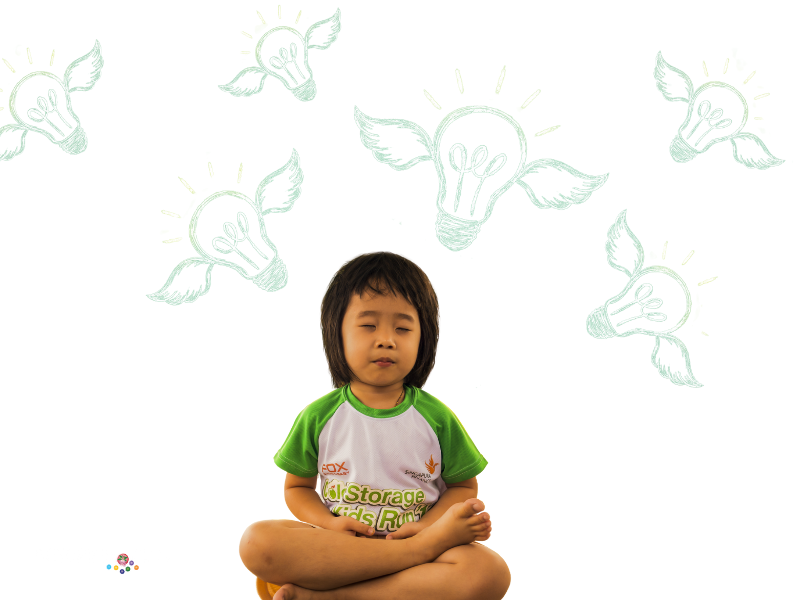
4. Imagining a Safe Space" Meditation is a great way to introduce like Techniques like Visualization.
This visualization activity gives children a mental retreat where they can feel safe and secure, offering them a break from overwhelming emotions. It fosters creativity while teaching them emotional regulation by shifting their focus from distressing thoughts to comforting imagery. By engaging their senses to build this "safe space," children develop tools for self-soothing that can be used in challenging moments. Over time, returning to this space helps build resilience, as it reminds them they have the inner resources to handle difficult emotions. Additionally, the practice enhances focus and imagination, skills that extend beyond moments of stress into everyday life.
How to Do It:
1.Sit or lie down in a comfortable position with your eyes closed.
2. Encourage your child to imagine a peaceful, happy place—like a beach, a magical forest, or their favorite spot at home.
3. Prompt them to explore their safe space by asking:
- What colours do they see?
- What sounds do they hear?
- How does the air feel on their skin?
- Are there any smells or tastes?
4. Allow them to immerse themselves for 3–5 minutes, then gently guide them back to the present moment by asking them to describe their safe space.
Why It Works:
1. Encourages Emotional Regulation
When children visualize a safe space, they shift their focus from the chaos of their emotions to a controlled, positive environment. This redirection reduces feelings of fear or anxiety and teaches kids how to calm themselves in distressing moments.
2. Builds Internal Resources
The "safe space" becomes a mental tool children can rely on any time they feel overwhelmed. This empowers them to handle emotional challenges independently, fostering confidence and emotional resilience.
3. Enhances Sensory Awareness
Children practice mindfulness by engaging their senses during the visualization (e.g., noticing colors, sounds, and textures) and developing a deeper connection to their emotions and surroundings.
4. Strengthens Creativity
Imagining and exploring a detailed safe space taps into children’s creativity, encouraging them to see challenges as opportunities to use their imagination to find solutions or comfort.
5. Supports Parent-Child Bonding
Parents guiding children through this practice creates an opportunity for connection and co-regulation. This shared experience reinforces trust and emotional safety within the family.
Conclusion
When I look back, it's incredible how much more control I seemed to have in the house once we started practicing mindfulness together. It was just a lot calmer, which always helps everyone feel they have control.
Over the past 25 years, I have learned that when we practice alongside our children, we both learn and model emotional regulation, patience, and self-awareness. Some of the tools I introduced to my kids have become my go-to strategies for navigating those moments when you feel like your hair is turning grey. Honestly, including my children in these practices strengthened our connections in ways I never expected, which continues to surprise me every day.

Angela Thibault
Angela Thibault is a mother of two, a passionate children’s author, and the founder of Satori Kid Club and The Parallel Journey™.
